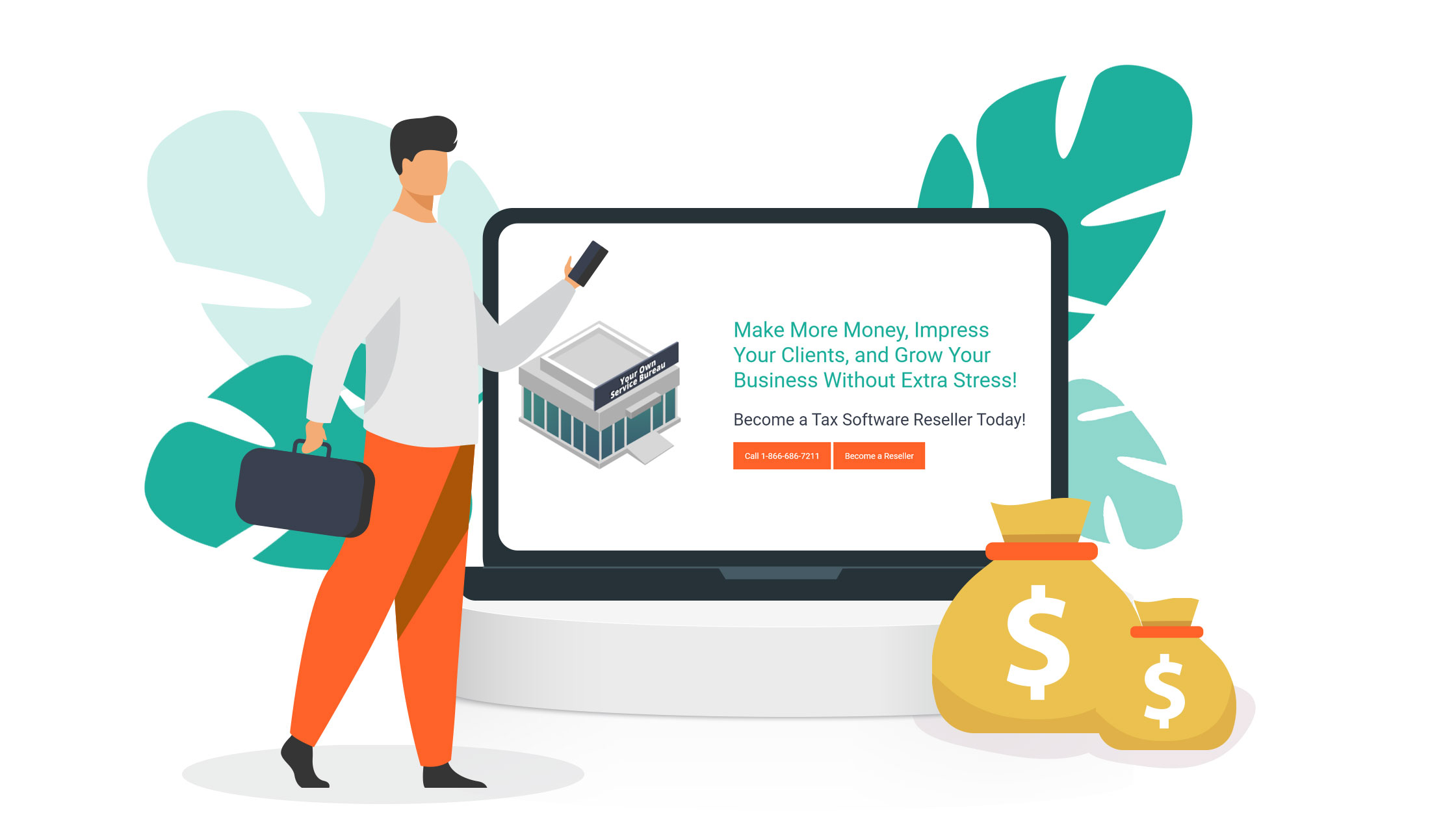
Are you considering a career as a tax preparer? It’s a great option for the self-starter who’s looking for a small business to manage. Tax preparation has a lot of advantages, including the ability to run a business without too many operating costs. No inventory, no high-cost equipment, no expensive travel… the list goes on.
As a tax professional, you can thrive with little more than a laptop equipped with tax preparation software, a phone, and some good training. You might also want to set up an office to serve as an employee workplace and a meeting space for your clients. Some tax preparers work out of a home office, however, and manage their team remotely using online communications.
As for equipment, you would probably want to invest in a good printer and scanner. Running a paperless office is certainly an option and can help you keep your costs down. But in all likelihood, you are going to have a need for a printer and other types of office equipment.
Let’s take a look at the various ways for you to cut costs while managing your tax preparation business.

Tax Office Equipment and Computers
You don’t need a lot of equipment for a tax preparation business. You certainly don’t need expensive high-end machines. Tax preparation software doesn’t require a lot of computing power. Even a fairly basic PC or laptop should be able to run it without any issues.
Of course, you should check the required hardware specs of the software that you intend to use. That may include your tax preparation software as well as office management software to handle documents and client info. Then you can start looking at computers that fit your budget while having the proper specs.
You could even purchase a refurbished computer, at least when you are starting out. Once your business is well established, you can upgrade to a newer machine. But if you are just starting out and trying to keep your costs down, then getting a refurbished device might be a viable and cost-effective decision.

Choosing a Printer for Your Tax Office
In terms of office equipment, the printer is the most essential tool you’ll need after getting the computer. Though it is possible to run a paperless office, you will probably need to print tax forms at some point in your professional life. And it’s not just tax forms. You’ll be printing memos, mail-outs, contracts, statements, and invoices.
Need to print out a tax return? A basic tax return with multiple schedules can add up to at least 12 printed pages. That is at minimum. Some returns of them go for over 100 pages! You can expect your printer to be busy around the clock! Plus you’ll need it for scanning and photocopying jobs, as well.
Assess your printing needs before you purchase a machine for your office. If you are going to be printing a lot of pages, you should invest in a laser printer—it is highly recommended. Laser printers can handle heavy-duty jobs at high print speeds. The faster your printing jobs, the more work you can get done. They also make the tax forms look more professional.
For more tips on selecting a printer, check out the Ultimate Guide for New Tax Preparers.

Do You Need a Physical Office?
One good way to cut costs is to avoid having to rent office space. Work from home and manage your team through Internet communications tools such as Skype and Zoom. You might want to do this in the early days of managing a tax office. Once you have established a successful business, you can consider an office rental at a good location.
The choice may come down to the advantage of renting a space at a particular location. If you can set up an office at an industrial park or a major commercial district, you might decide that renting is worth it. As the office could be well placed to attract walk-in customers.
Otherwise, a home office is definitely a great option, especially if you have a good understanding of the online platforms and apps you’ll be using.

Furnishing Your Tax Office
Here’s a great tip for setting up your new office: purchase used or refurbished office furniture! Even if you decide to rent a furnished office, you might find that you need a few more items here and there. And of course, if you’re renting an unfurnished office, you’ll have to make it into a good working environment.
Buying new office furniture can prove very costly. So especially when you’re just starting out, buying used can make a lot of sense. Keep in mind that furniture buying can take a lot of time and effort. Not only do you have to be very selective, you have to think about how the items will work together in one place. You don’t want your office to be a showcase of haphazard interior design.
If you do opt for used or refurbished furniture, be sure to purchase pieces you really love. Buying used furniture is not only a good way to save costs. It’s a chance to design your office using personally picked items that appeal to you a lot.

Low-Cost Marketing Tactics
Every small business has to work hard to attract customers. Unfortunately, small business owners don’t get a huge marketing budget to spend. How will you promote your services without breaking the bank?
Initially you can join local groups on social media and talk about your new venture. Promote who you are, your personality. Be honest and be who you are. When customers are looking for a new tax preparer they want someone they trust, so they evaluate your personality and review your social posts.
You can look for various ways to increase awareness of your business without spending on advertising. Consider going with a direct approach. Approach local businesses and leave your card, seeking to get an appointment with the owner. This is basically cold-calling, and it is a high-risk, high-effort tactic. But it won’t cost you too much, except in pride.
Referrals can be a great source of new customers. Find ways to encourage your clients to refer their friends, family members, and co-workers to your tax office.
Establish a web presence. You can market your business through Facebook, LinkedIn, or even your very own website and blog. Contribute articles to other well-known blogs in your industry—and be sure you get the chance to promote your business while you’re at it!

Affordable Tax Preparation Software
Today’s tax preparers get to leverage powerful software tools in processing returns with exceptional speed and accuracy. Tax preparation software can turn a complex task into a highly simple and efficient one.
That means tax professionals will be able to complete projects faster and take on more clients, leading to greater revenue inflows. Of course, that does come at a cost. Professional tax preparation software requires a paid subscription to use.
You have to carefully consider what software option matches your needs as well as your budget. There are many different tax preparation software subscriptions available to tax professionals. It’s important to note that all of them do the same thing, essentially. They process information into completed tax returns that can be electronically submitted to the IRS.
So what differentiates these software options? Pricing, customer support, bank product integration, and user friendliness. In terms of a end product, the tax return, they all do the same thing. However, not all tax programs are almost the same. Thus you’ll want to focus on affordability as well as customer service reliability. Look for a software company that can provide support, help you with onboarding and ask what the annual renewal price is.
For a more in-depth look at the various tax preparation software options, check out this Professional Tax Software Comparison Chart. Or try out the affordable and powerful UltimateTax Professional Tax Preparation Software! Get a free demo here!





